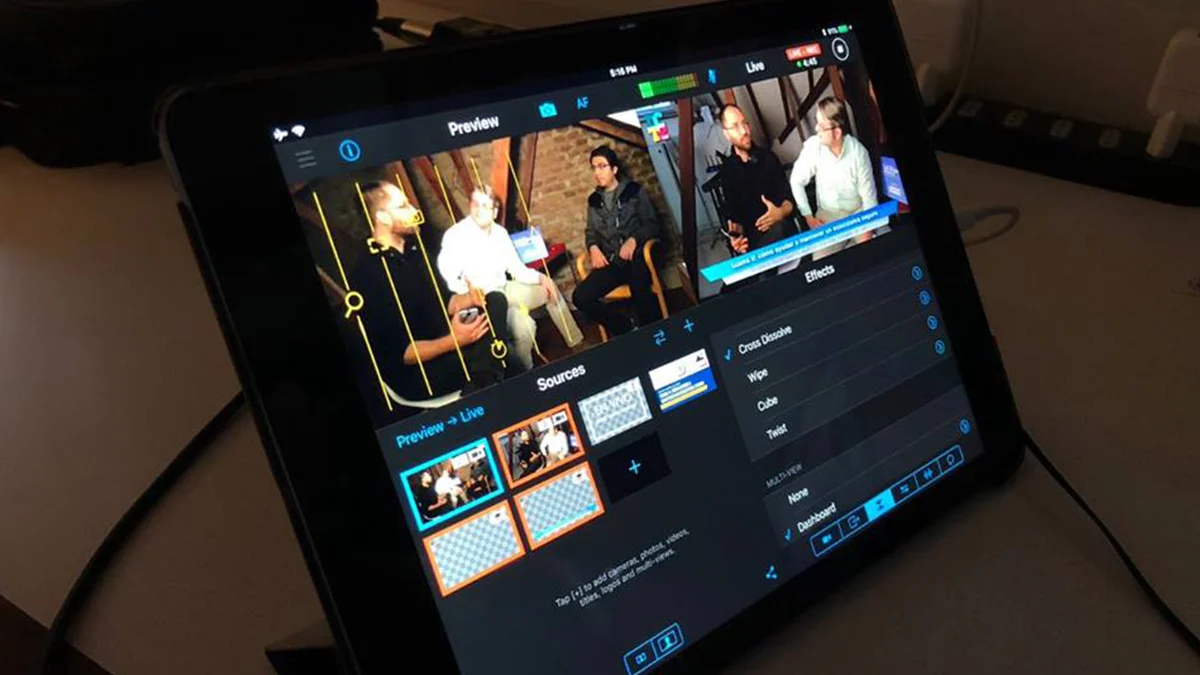

Table of Contents
- What is Wrike?
- Overview of Wrike
- Pros
- Cons
- Features by Wrike
- What Sets Wrike Apart
- Wrike Core Features
- Wrike Security
- Who Is Wrike Best For?
- Wrike business analysis
- Built in Task Time-Tracking
- Apps & Integrations Options
- Wrike Pricing
- Conclusion
- FAQ
- What is Wrike?
- What features does Wrike offer?
- What is the pricing for Wrike?
- What kind of customer support does Wrike offer?
- Is Wrike secure?
What is Wrike?

Wrike is a project management software that allows teams to collaborate and manage projects more efficiently. It provides a centralized platform where team members can organize and prioritize tasks, set deadlines, communicate with each other, and track progress in real-time. Wrike offers a variety of features such as customizable dashboards, Gantt charts, time tracking, workload management, file sharing, and integrations with other tools. It is designed for teams of all sizes and industries, including marketing, creative, IT, and project management teams. Wrike aims to improve project transparency, boost productivity, and streamline workflows.
Overview of Wrike

Wrike is a cloud-based project management and collaboration software designed to help teams of all sizes streamline their workflows and achieve their project goals more efficiently. It was founded in 2006 by Andrew Filev and is headquartered in San Jose, California.
With Wrike, teams can easily create and manage projects, assign tasks to team members, set deadlines, track progress, and communicate in real-time. It provides a central location where team members can collaborate on projects, share files, and keep track of updates.
Wrike offers a range of features including customizable dashboards, Gantt charts, calendars, time tracking, workload management, and reporting. It also integrates with popular tools such as Microsoft Office, Salesforce, and Google Drive.
Wrike is suitable for teams in a variety of industries, including marketing, creative, IT, and project management. It is designed to improve project transparency, boost productivity, and streamline workflows, making it an ideal tool for teams looking to improve their project management processes.
Pros
- Ease of Use: Wrike has a user-friendly interface, making it easy for team members to navigate and use.
- Customization: Wrike allows for a high degree of customization, such as creating custom workflows and fields to meet the unique needs of a team or project.
- Collaboration: Wrike enables team members to collaborate in real-time, share files, and communicate within the platform, which can improve team communication and overall project outcomes.
- Time Management: Wrike has features such as time tracking and workload management, which can help teams better manage their time and resources.
- Project Visibility: Wrike provides a central location for project data, which can increase transparency and visibility for team members and stakeholders.
- Integration: Wrike can integrate with other tools and applications, such as Salesforce and Google Drive, which can streamline workflows and improve productivity.
Overall, Wrike can help teams improve their project management processes and increase productivity by providing a centralized platform for collaboration and project management
Cons
- Complexity: While Wrike is customizable and feature-rich, its complexity may make it challenging for some team members to use effectively, especially those who are less tech-savvy.
- Pricing: Wrike can be relatively expensive compared to other project management software options, especially for larger teams.
- Learning Curve: As with any new tool, there may be a learning curve for team members to become proficient in using Wrike.
- Limited Free Version: Wrike’s free version is limited in terms of features and functionality, which may not be sufficient for some teams.
- Reporting: While Wrike does offer reporting features, they may not be as robust or customizable as some users may prefer.
- Performance: In rare cases, some users have reported issues with Wrike’s performance, such as slow loading times or lagging.
Overall, while Wrike has many benefits, it may not be the best fit for all teams or projects. It’s essential to carefully evaluate your team’s needs and budget before deciding whether to use Wrike or another project management tool.
Features by Wrike
Wrike offers a variety of features to help teams manage projects and collaborate more effectively. Here are some of the key features offered by Wrike:
- Project Management: Wrike provides a centralized platform for managing projects, including the ability to create and assign tasks, set deadlines, track progress, and manage resources.
- Collaboration: Wrike enables team members to collaborate in real-time, share files, and communicate within the platform. It also includes commenting, @mentioning, and direct messaging features.
- Customization: Wrike allows for a high degree of customization, such as creating custom workflows and fields to meet the unique needs of a team or project.
- Time Tracking: Wrike has built-in time tracking features that enable teams to track time spent on tasks, projects, and clients.
- Resource Management: Wrike has features for managing resources, including workload management, capacity planning, and resource allocation.
- Gantt Charts: Wrike offers interactive Gantt charts, which provide a visual representation of project timelines and dependencies.
- Reporting: Wrike provides a variety of reporting features, including customizable dashboards, real-time reports, and custom reports.
- Mobile App: Wrike has a mobile app for iOS and Android devices, which enables teams to stay connected and manage projects while on the go.
- Integrations: Wrike integrates with a variety of other tools and applications, including Microsoft Office, Salesforce, and Google Drive.
Overall, Wrike’s features are designed to help teams streamline their workflows, improve collaboration, and achieve their project goals more efficiently.
What Sets Wrike Apart

- Customization: Wrike offers a high degree of customization, enabling teams to create custom workflows and fields, which can be tailored to meet the unique needs of their projects and team.
- Collaboration: Wrike provides a centralized platform for real-time collaboration, file sharing, and communication, which can help teams work more efficiently and productively.
- Integration: Wrike integrates with a wide variety of other tools and applications, such as Salesforce and Google Drive, which can streamline workflows and increase productivity.
- Time Tracking: Wrike’s built-in time tracking features enable teams to accurately track time spent on tasks and projects, which can improve project planning and resource allocation.
- Reporting: Wrike provides a variety of reporting features, including customizable dashboards, real-time reports, and custom reports, which can improve project visibility and help teams make data-driven decisions.
- Mobile App: Wrike has a mobile app for iOS and Android devices, enabling teams to manage projects on-the-go, which can increase flexibility and productivity.
- AI-Powered Automation: Wrike is equipped with AI-powered features that automate routine tasks, such as task assignment and scheduling, which can save teams time and increase efficiency.
Overall, Wrike’s combination of customization, collaboration, integration, time tracking, reporting, mobile app, and AI-powered automation features make it a comprehensive project management and collaboration solution suitable for teams of all sizes and industries.
Wrike Core Features

- Task Management: Wrike provides a centralized platform for creating, assigning, and managing tasks. Team members can easily update task status, add comments, and track progress in real-time.
- Project Management: Wrike allows teams to create and manage projects, set deadlines, and track progress. It provides a Gantt chart view of project timelines, dependencies, and milestones.
- Collaboration: Wrike enables team members to collaborate in real-time, share files, and communicate within the platform. It also includes commenting, @mentioning, and direct messaging features.
- Time Tracking: Wrike has built-in time tracking features that enable teams to track time spent on tasks, projects, and clients.
- Resource Management: Wrike has features for managing resources, including workload management, capacity planning, and resource allocation.
- Reporting: Wrike provides a variety of reporting features, including customizable dashboards, real-time reports, and custom reports. It also allows exporting data in different formats, including PDF, Excel, and CSV.
- Mobile App: Wrike has a mobile app for iOS and Android devices, enabling teams to manage projects on-the-go. It allows users to create, view, and update tasks, projects, and files.
- Integrations: Wrike integrates with a variety of other tools and applications, such as Microsoft Office, Salesforce, and Google Drive.
Overall, these core features enable teams to manage tasks, projects, and resources, collaborate effectively, track time, generate reports, and integrate with other tools to streamline workflows and increase productivity.
Wrike Security
- Data encryption: All data in transit is encrypted using SSL/TLS protocols, while data at rest is encrypted using AES-256 encryption.
- Multi-factor authentication: Wrike supports multi-factor authentication (MFA) to add an extra layer of security to user accounts.
- Access controls: Wrike offers granular access controls to help administrators manage user permissions and restrict access to sensitive information.
- Data backups: Wrike performs regular data backups to ensure that user data is protected against loss or corruption.
- Compliance: Wrike is compliant with a range of industry standards, including SOC 2, GDPR, and HIPAA.
- Security audits: Wrike performs regular security audits to identify and address potential vulnerabilities in its platform.
Overall, Wrike has implemented a comprehensive security program to protect user data, and the platform is trusted by businesses of all sizes around the world.
Wrike Customer Service and Support
- Help Center: Wrike’s Help Center provides users with access to a range of resources, including user guides, FAQs, and video tutorials.
- Email Support: Wrike’s support team can be reached via email, and users can expect a response within one business day
- Phone Support: Wrike offers phone support to users on its Business and Enterprise plans.
- Live Chat: Wrike’s live chat support is available to users on its Professional, Business, and Enterprise plans.
- Community: Wrike’s community forum is a place where users can share ideas, ask questions, and get advice from other users.
- Onboarding: Wrike provides personalized onboarding to new users to help them get started with the platform.
Overall, Wrike’s customer service and support options are comprehensive, and users can expect prompt and helpful responses to their inquiries.
Wrike Additional Features
In addition to the core project management and collaboration features, Wrike offers several additional features that can help teams work more efficiently and effectively. Here are some of the additional features of Wrike:
- Custom Fields: Wrike allows users to create custom fields for tasks, projects, and folders, which can be used to track additional information and metadata.
- Request Forms: With Wrike’s request forms, users can create custom forms to capture project requests and automatically generate new tasks and projects.
- Time Tracking: Wrike includes a built-in time tracking feature that allows users to track time spent on tasks and projects.
- Resource Management: Wrike offers resource management tools to help users allocate resources and manage team workloads.
- Gantt Charts: Wrike’s Gantt chart view allows users to visualize project timelines and dependencies, making it easier to manage complex projects.
- Reports: Wrike provides a range of reporting options, including task and project progress reports, time tracking reports, and workload reports.
Overall, Wrike’s additional features help teams manage their projects more efficiently and provide greater visibility into project progress and resource allocation.
Who Is Wrike Best For?

Wrike is a versatile project management and collaboration tool that is suitable for a range of businesses and industries. Here are some of the types of organizations that Wrike is best suited for:
- Small to medium-sized businesses: Wrike’s affordable pricing plans and flexible features make it an excellent option for small to medium-sized businesses that need a simple yet powerful project management tool.
- Marketing and creative teams: Wrike offers several features specifically designed for marketing and creative teams, such as request forms, proofing tools, and Adobe Creative Cloud integration.
- IT and development teams: Wrike’s custom workflows, GitHub and JIRA integrations, and agile project management tools make it an excellent option for IT and development teams
- Remote and distributed teams: Wrike’s cloud-based platform and collaboration features make it an ideal tool for remote and distributed teams that need to work together on projects from different locations.
- Enterprise organizations: Wrike’s enterprise-level features, such as advanced security and compliance, make it a viable option for larger organizations with complex project management needs.
Overall, Wrike’s versatility and customizable features make it a great option for businesses of all sizes and industries, particularly those looking for an intuitive, cloud-based project management and collaboration tool.
Wrike business analysis
Wrike is a comprehensive project management and collaboration tool that can help businesses streamline their workflows, increase productivity, and improve communication among team members. Here are some of the key benefits of using Wrike for business analysis:
- Improved project management: Wrike’s project management features, including task management, custom workflows, and Gantt charts, allow teams to plan and manage projects more efficiently.
- Increased productivity: Wrike’s time tracking and workload management tools help teams prioritize tasks and allocate resources more effectively, resulting in increased productivity.
- Better communication: Wrike’s collaboration features, such as comments, @mentions, and real-time notifications, make it easier for team members to communicate and share information, reducing the risk of miscommunication and errors.
- Enhanced visibility: Wrike’s reporting tools provide real-time visibility into project progress, resource allocation, and team workload, making it easier for managers to identify and address issues.
- Improved agility: Wrike’s agile project management tools, such as sprint planning and backlog management, help teams respond quickly to changing project requirements and priorities.
- Advanced security: Wrike’s enterprise-level security features, including data encryption, multi-factor authentication, and compliance with industry standards, help businesses protect their sensitive data and meet regulatory requirements.
Overall, Wrike’s robust project management and collaboration features can help businesses of all sizes improve their workflows, increase productivity, and achieve their goals more efficiently.
Work Schedule Management Tool
Wrike is a powerful work schedule management tool that allows teams to manage tasks, track progress, and collaborate on projects in real-time. Here are some of the ways in which Wrike can be used for work schedule management:
- Task management: Wrike’s task management features allow users to create, assign, and prioritize tasks, making it easier to manage workloads and meet deadlines.
- Time tracking: Wrike’s built-in time tracking feature allows users to track the time spent on each task, making it easier to monitor progress and ensure that deadlines are met.
- Workload management: Wrike’s workload management tools allow users to view and manage team workloads, making it easier to allocate resources and avoid overloading team members.
- Custom workflows: Wrike’s customizable workflows allow users to create custom processes and automate tasks, making it easier to manage complex projects and improve efficiency.
- Calendar integration: Wrike integrates with popular calendar tools such as Google Calendar, making it easy to manage work schedules and deadlines.
- Reporting: Wrike’s reporting tools provide real-time visibility into project progress and team workload, making it easier to monitor performance and identify areas for improvement.
Overall, Wrike’s work schedule management features can help teams stay organized, manage workloads, and meet deadlines more effectively, improving productivity and efficiency
Create Simple Workflow Automations
Wrike offers several ways to create simple workflow automations that can help users save time and streamline their processes. Here are some steps to create simple workflow automations in Wrike:
- Create a trigger: The first step is to define the trigger that will activate the automation. This could be a specific event, such as a task being created or a status changing.
- Choose an action: Next, you will need to choose the action that the automation will perform when triggered. This could be assigning a task to a specific user, changing the status of a task, or sending an email notification.
- Define the conditions: You may want to define certain conditions that must be met before the automation is triggered. For example, you may only want the automation to be triggered if a task is assigned to a specific user.
- Test and refine: Once you have created the automation, it is important to test it thoroughly to ensure that it is working as expected. You may need to refine the automation based on the results of your testing.
- Some examples of simple workflow automations that can be created in Wrike include:
- When a task is marked as complete, send an email notification to the project manager.
- When a task is assigned to a specific user, automatically change the status to “In Progress”.
- When a task is due in less than 24 hours, send an email reminder to the assigned user.
Overall, Wrike’s workflow automation features can help users save time and streamline their processes, allowing them to focus on more important tasks.
Built in Task Time-Tracking

Wrike offers a built-in task time-tracking feature that allows users to track the time spent on tasks and projects in real-time. Here are some of the key features of Wrike’s time-tracking tool:
- Manual and automatic tracking: Wrike’s time-tracking tool allows users to track time manually or automatically, depending on their preferences
- Multiple timers: Users can track time for multiple tasks simultaneously using Wrike’s multiple timer feature.
- Customizable hourly rates: Wrike allows users to set custom hourly rates for different users or tasks, making it easier to calculate billable hours.
- Real-time visibility: Wrike provides real-time visibility into task progress and time spent, allowing users to monitor project performance and make adjustments as needed.
- Reports: Wrike’s time-tracking tool includes a range of reporting options, including time spent by user, project, and task, making it easier to generate accurate invoices and track project costs.
- Integration with billing software: Wrike integrates with popular billing and accounting software such as QuickBooks and Xero, making it easier to invoice clients and manage project finances.
Overall, Wrike’s built-in task time-tracking feature can help users monitor project progress and track billable hours more effectively, improving efficiency and accuracy in project management.
Apps & Integrations Options

Wrike offers a wide range of apps and integrations that allow users to connect Wrike to other tools and services they use on a daily basis. Here are some of the key apps and integrations options available in Wrike:
- Microsoft Office and Google Drive: Wrike integrates with Microsoft Office and Google Drive, allowing users to create, edit, and save documents directly in Wrike.
- Salesforce: Wrike integrates with Salesforce, providing seamless project management and collaboration within the Salesforce environment.
- Adobe Creative Cloud: Wrike integrates with Adobe Creative Cloud, allowing creative teams to manage their projects and tasks directly from their favorite Adobe tools.
- Slack: Wrike integrates with Slack, allowing teams to receive real-time notifications and updates directly in Slack.
- GitHub and JIRA: Wrike integrates with GitHub and JIRA, making it easier for development teams to manage their workflows and track progress on coding projects.
- Zapier: Wrike integrates with Zapier, allowing users to connect Wrike to thousands of other apps and services.
Overall, Wrike’s extensive app and integration options make it easy for users to connect Wrike to the tools and services they use on a daily basis, improving collaboration and efficiency in project management
Wrike Pricing

Wrike offers several pricing plans to meet the needs of different types of businesses and organizations. Here is an overview of Wrike’s pricing options:
- Free: Wrike’s free plan is suitable for individuals or small teams with basic project management needs. It includes basic task management and collaboration features, and allows for an unlimited number of collaborators
- Professional: Wrike’s Professional plan is suitable for small to medium-sized businesses with more complex project management needs. It includes advanced task management and collaboration features, Gantt charts, custom workflows, and integrations with other tools. The cost is $9.80 per user per month, when billed annually.
- Business: Wrike’s Business plan is suitable for larger businesses and enterprises with more advanced project management needs. It includes all the features of the Professional plan, plus additional security and customization options. The cost is $24.80 per user per month, when billed annually.
- Enterprise: Wrike’s Enterprise plan is suitable for large enterprises with complex project management needs. It includes all the features of the Business plan, plus advanced security and compliance features, dedicated customer support, and customized onboarding. The pricing is customized based on the needs of the organization.
Wrike also offers a free trial for all of its plans, allowing users to test the platform and its features before committing to a subscription.
Conclusion

In conclusion, Wrike is a powerful and versatile project management and collaboration tool that offers a wide range of features to help teams streamline their workflows, increase productivity, and improve communication. From task management and time tracking to advanced reporting and enterprise-level security, Wrike has something to offer businesses of all sizes and industries. With its extensive app and integration options, users can connect Wrike to the tools and services they use on a daily basis, making it a flexible and powerful solution for project management and team collaboration. Whether you are a small business owner or part of a large enterprise organization, Wrike has the features and pricing options to meet your project management needs.
FAQ

What is Wrike?
Wrike is a project management and collaboration tool that allows teams to manage tasks, track progress, and collaborate on projects in real-time.
What features does Wrike offer?
Wrike offers a range of features, including task management, time tracking, project templates, custom workflows, collaboration tools, and reporting.
What is the pricing for Wrike?
Wrike offers several pricing plans to meet the needs of different types of businesses and organizations, ranging from a free plan for individuals and small teams to an enterprise plan for larger organizations.
Does Wrike offer integrations with other tools and services?
Yes, Wrike offers a wide range of integrations with other tools and services, including Microsoft Office, Google Drive, Salesforce, Adobe Creative Cloud, Slack, GitHub, and more
What kind of customer support does Wrike offer?
Wrike offers several customer support options, including email support, phone support, live chat, a help center, and personalized onboarding.
Is Wrike secure?
Yes, Wrike takes security very seriously and has implemented a range of measures to protect user data, including data encryption, multi-factor authentication, and compliance with industry standards.



